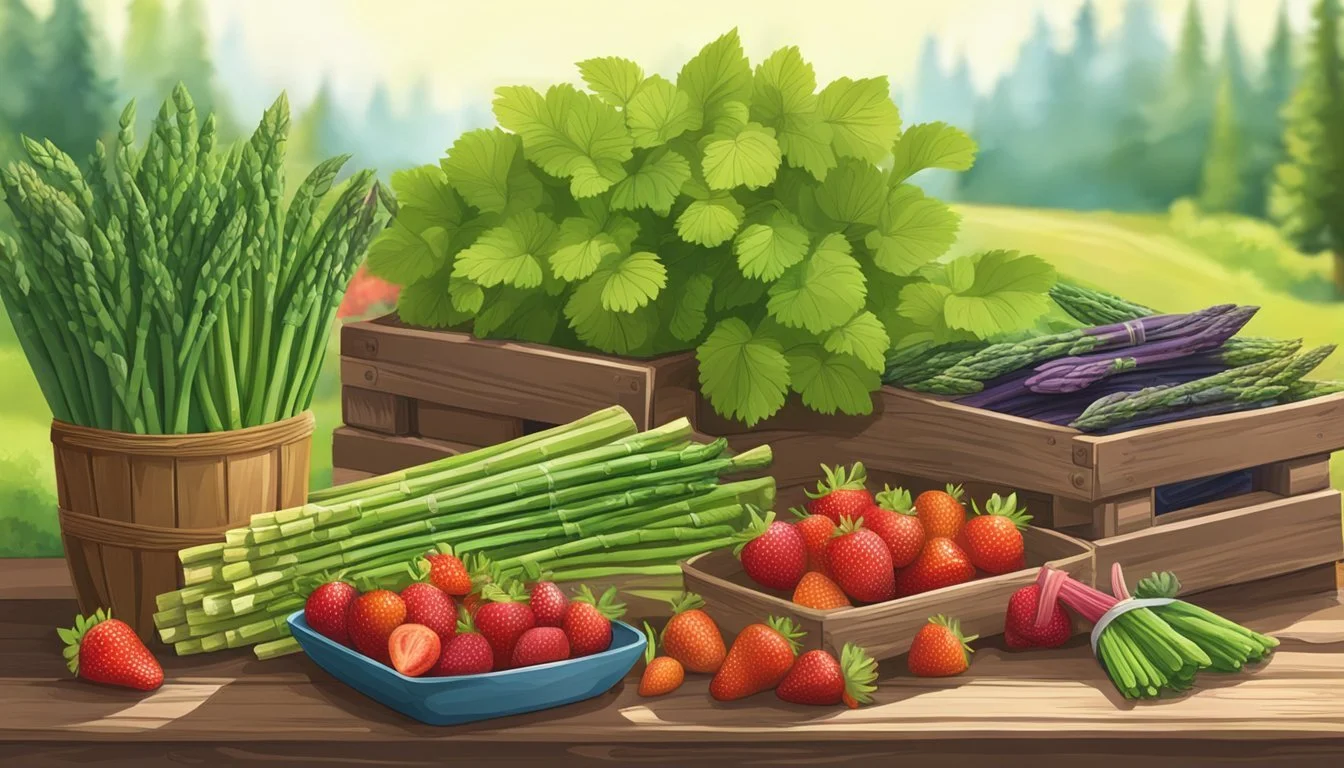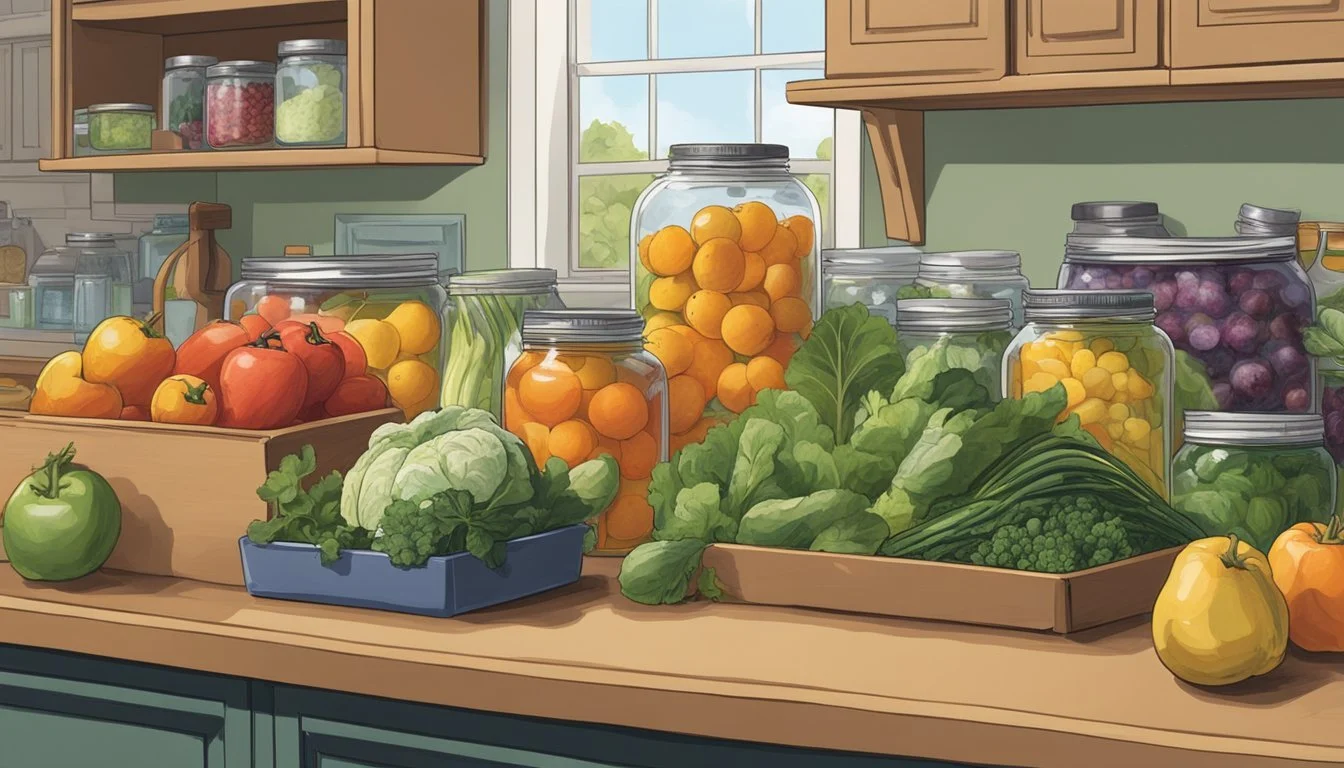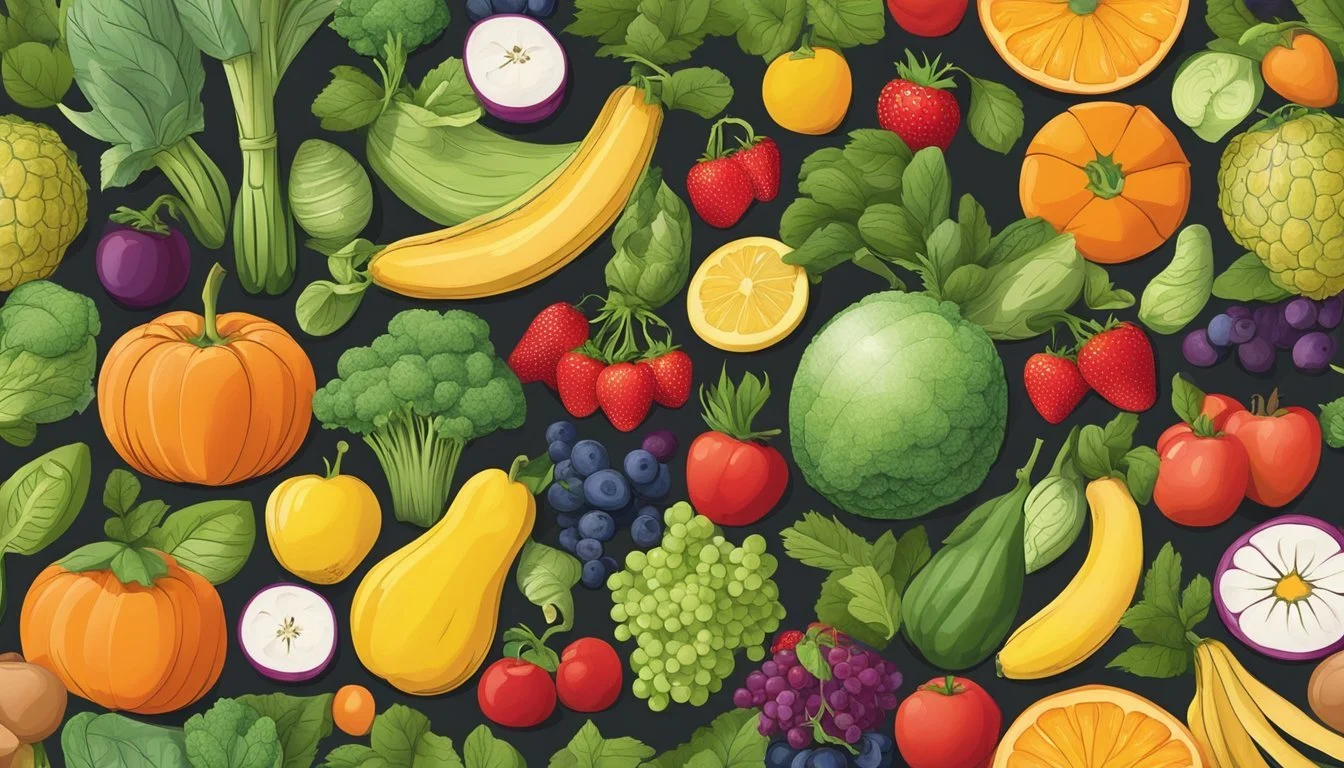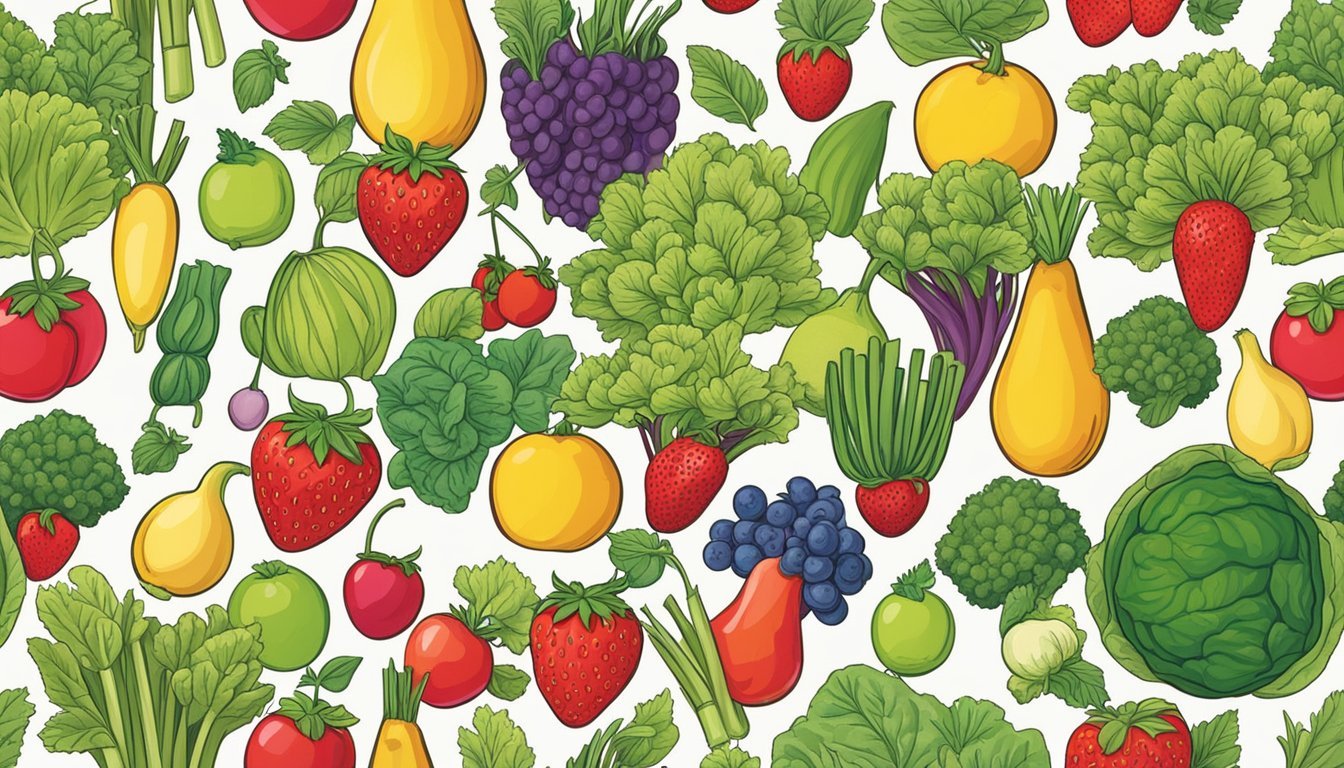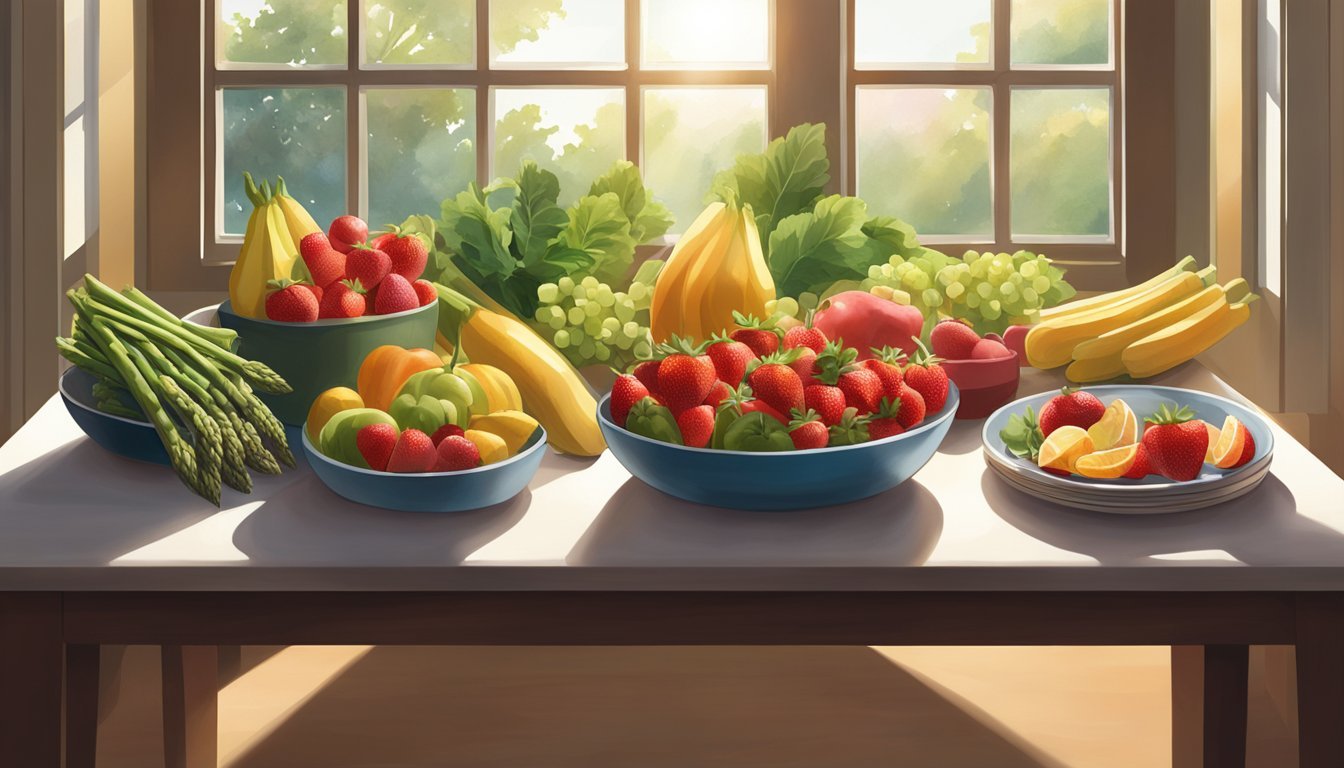Washington Seasonal Fruit & Vegetables in April
Your Fresh Guide
This Article is Part of our Washington Seasonal Fruit & Veg Calendar
Washington State offers a rich tapestry of fruits (What wine goes well with fruit?) and vegetables that vary with the seasons, responding to the region's diverse climates from the verdant coast to its more arid eastern reaches. April marks a transitional period in Washington's agricultural calendar, where the last whispers of winter make way for the early signs of spring. This is a time when farmers and gardeners begin to harvest a variety of produce that will carry on flowering into the abundant summer months.
During April, the state's produce starts to diversify as the ground thaws and planting commences. Season-specific vegetables like tender asparagus (What wine goes well with asparagus?) spear their way through the soil, and leafy greens such as kale, spinach, and lettuces start thriving, offering up fresh flavors after the long, cold winter. Although the full bounty of summer fruits has yet to arrive, rhubarb often makes its debut, hinting at the sweeter times ahead.
The month's temperate though unpredictable weather, with a blend of warm days and cool nights, provides an ideal environment for these crops to flourish. Consumers can expect to find these seasonal offerings at local markets, a true testament to Washington's ability to produce a rich variety of fruits and vegetables that are at their peak of flavor and nutritional value in April.
Understanding Seasonality
As we examine the seasonal availability of produce in Washington State during April, one must understand the foundational concepts and inherent advantages of aligning consumption with the seasonal harvest calendar.
Principles of Seasonal Produce
The principles of seasonal produce rest on the natural growth cycles of fruits and vegetables. These cycles are usually broken into four main periods:
Spring: A time of renewal, when early greens and tender, leafy vegetables begin to appear.
Summer: Characterized by a variety of fruits and vegetables, including berries and stone fruits.
Fall: Offers a bountiful harvest of root vegetables, squash, and late berries.
Winter: Primarily reserved for storage crops like onions, potatoes, and winter greens.
These natural cycles mean that produce is at its peak in both flavor and nutrition when consumed within its natural harvest season.
Benefits of Eating Seasonally
Eating seasonally provides numerous benefits:
Nutritional Value: Foods grown and consumed during their appropriate seasons are typically more nutritionally rich.
Flavor: Seasonal fruits and vegetables often have enhanced flavor profiles due to the prime growing conditions of their natural season.
Environmental Impact: Seasonal eating can reduce the carbon footprint associated with long-distance food transport.
Community Support: Purchasing seasonal items supports local farmers and producers, bolstering the local economy.
Eating according to the seasons is a practice that intertwines well-being with environmental stewardship.
April’s Seasonal Crops in Washington
April marks a transitional month in Washington, showcasing a blend of late winter and early spring produce. This period offers a chance to savor the last of cool-weather crops while witnessing the arrival of fresh spring offerings.
Fruits in Season
In Washington, April is generally not a peak season for fruit harvests, with most fruit crops preparing to ripen in the coming months. However, some stored fruits from previous seasons, such as apples and pears, may still be available in good quality due to controlled atmosphere storage techniques.
Vegetables in Season
Bold crops highlight the peak season offerings while italic indicates the tail end of their season.
Asparagus: An early spring vegetable, asparagus begins to make its appearance in April, offering crisp texture and a grassy, slightly sweet flavor.
Kale: Hardy and nutritious, kale may still be available from winter plantings, providing earthy, robust greens for seasonal dishes.
Leeks: With their mild onion-like taste, leeks are often harvested into early spring, complementing a variety of recipes.
Radishes: Quick to mature, radishes are one of the first fresh vegetables ready in April, adding a peppery crunch to salads and side dishes.
Rhubarb: Technically a vegetable but often used as a fruit in desserts, rhubarb starts in April, recognized by its tart flavor and bright red stalks.
Washington's April harvest is a period where the remnants of winter intersect with the promise of spring, giving consumers a unique and diverse array of produce options.
Preparing for the Transition
As April unfolds in Washington, gardeners and consumers alike witness the departure of winter crops and anticipate the arrival of spring offerings. The markets gradually shift from the hearty winter vegetables to the vibrant produce of spring.
From Winter to Spring
In this phase, Washington says farewell to the last of the winter produce. Vegetables like kale and root vegetables remain available, while asparagus is among the first of the spring crops to appear. This is the time to enjoy the final batches of winter's bounty while making room for the new flavors of spring. Gardeners often prepare their soil for planting, and consumers can expect to see the following produce become more prominent at local markets:
Radishes
Spring onions
May brings about a noticeable increase in temperature and daylight, which allows a broader variety of fruits and vegetables to thrive. They can anticipate the first harvests of tender greens like spinach and look forward to strawberry season, which starts in late May.
Anticipating Early Summer
With June encroaching, the anticipation for summer fruits begins. Washington's agriculture gears up for a fruitful summer, with early fruits like cherries (how long do cherries last?) and berries getting ready to hit the market. Farmers are busy during this time, ensuring optimal growing conditions for the upcoming summer harvest. Shoppers can look forward to a surge in locally grown produce, including:
Strawberries (continuing from May)
Cherries
Early blueberries
The transition from spring to early summer is marked by a colorful shift in the fresh produce available. It symbolizes not just a change in the season but also a fresh approach to eating and cooking, integrating more fresh salads and fruit dishes into meals.
Focus on Farming Practices
In Washington State, farming practices in April are influenced by the preceding weather patterns and the readiness of local farms to adapt their harvesting techniques to the conditions. These factors directly affect the variety and availability of crops.
Local Farms and Harvesting Techniques
Farmers in Washington employ a mix of traditional and modern harvesting techniques to ensure the quality of their produce. In April, asparagus often marks the beginning of the spring harvest, and farmers meticulously hand-harvest this crop to maintain its integrity. Local farms also start preparing for the upcoming main harvest season by employing crop rotation and soil enrichment practices to maximize yield and maintain soil health.
Weather Impact and Crop Variability
Washington's weather in April can be unpredictable, with late frosts or increased rainfall impacting crop development. Farmers closely monitor weather forecasts and employ protective measures, such as row covers or windbreaks, to shield sensitive crops. The state's diverse climate allows for varied produce across its regions; for instance, the maritime influence in the Puget Sound can lead to distinct farming challenges and crop outcomes compared to the more arid eastern parts. Despite these challenges, farmers are adept at adjusting their planting schedules and choosing crop varieties that can thrive in the variable conditions typical of an April in Washington.
Seasonal Recipes and Preservation
April in Washington provides an abundance of fresh produce that can be used in a variety of recipes and preserved for future enjoyment. Utilizing these seasonal items ensures peak flavor and sweetness in dishes, and proper storage methods can extend their use beyond the season.
Cooking with April Produce
Seasonal fruits and vegetables in Washington, such as strawberries and asparagus, bring a burst of flavor to springtime recipes. Strawberries, notable for their vibrant red hue and natural sweetness, make excellent candidates for desserts, salads, and even savory sauces. Asparagus, known for its tender yet crisp texture, can be considered a versatile vegetable working well in stir-fries, quiches, (What wine goes well with quiche?) and as a steamed or grilled side.
Recipes to try:
Strawberry Spinach Salad with a poppy seed dressing
Roasted Asparagus with a touch of garlic and lemon zest (how long does lemon zest last?)
These dishes not only highlight the flavors of the season but also provide a refreshing variety to meals.
Storing for Future Use
Preservation techniques can help extend the life of seasonal produce, ensuring these flavors can be enjoyed for months to come. Suggestions for preserving include:
Fruit (e.g., Strawberries):
Freezing: Hull and slice strawberries, spread them on a baking sheet to freeze individually, and then transfer to freezer bags.
Making jams or preserves: Cook strawberries with sugar and pectin (how long does pectin last?) to create homemade jams.
Vegetables (e.g., Asparagus):
Blanching and freezing: Blanch asparagus in boiling water, shock in ice water, dry thoroughly, and freeze in a single layer.
Pickling: Preserve asparagus in a vinegar brine to enjoy a tangy treat later on.
By employing these methods, one ensures none of the harvests go to waste and can incorporate the essence of April's produce into dishes year-round.
Healthy Eating and Sustainability
Incorporating seasonal produce into one’s diet offers nutritional and environmental benefits that are essential for healthy living and the sustainability of our planet. Washington's bountiful April harvest aligns with these principles.
Nutritional Advantages of Seasonal Eating
Seasonal fruits and vegetables harvested at their peak ripeness are often more nutrient-dense. These items, fresh from Washington's fields, offer a higher content of vitamins and minerals due to the minimal time between harvest and consumption. For instance, Fava beans, (how long do fava beans last?) available from April through June, are an excellent source of lean protein and important nutrients like iron and fiber.
Fava Beans: Rich in protein, dietary fiber, vitamins, and minerals.
Environmental Benefits
Eating seasonally and locally reduces the environmental impact linked to food transportation and storage. Choosing produce like fava beans and other green vegetables that are locally available in April minimizes the carbon footprint from farm to table.
Reduced Shipping: Limited transportation distance cuts down on greenhouse gas emissions.
Fewer Storage Resources: Less need for refrigeration or artificial ripening processes.
Local farms often employ sustainable practices that preserve soil health and biodiversity, further enhancing the positive environmental effects of seasonal eating.
Month-by-Month Produce Guide
This section will guide readers through what produce is available in Washington State during March and April and what is anticipated for May.
March Overview
In March, Washington sees the last of its winter produce and the beginning of spring offerings. Root vegetables like beets are still available from winter stores alongside cabbages, which thrive in cooler temperatures. Consumers can look forward to the early starts of spring with fresh asparagus, marking the change of seasons.
Looking Ahead to May
Looking ahead, May promises a broader variety of fresh produce. Asparagus season will be in full swing, and basil will begin to make its appearance, providing the first hint of summer's bounty. Folks can also anticipate the arrival of early strawberry varieties, a sure sign that the peak of spring is upon Washington.
Seasonal Eating Challenges
Seasonal eating in Washington during April can present its unique set of challenges, primarily revolving around the availability of local produce and overcoming limitations of the off-season.
Availability and Access
During April, availability of seasonal fruit and vegetables in Washington fluctuates due to the transition between the cool, wet winter and the warmer, dry onset of summer. Freshness and supply of local produce can be inconsistent, posing a challenge for consumers and local businesses alike. They may experience difficulty accessing a diverse range of seasonal produce as the majority of winter crops have ended and many spring crops haven't fully matured.
Limited Variety: The range of available produce is narrower compared to peak harvest months.
Higher Prices: Scarce items might be priced higher due to limited supply.
Overcoming the Off-Season
To counter the challenges presented by the off-season in April, consumers and vendors can take several proactive steps:
Storage Methods: Utilizing preserved goods from previous seasons, such as canned, dried, or frozen fruits and vegetables.
Flexible Menus: For businesses, adapting menus to focus on the produce that is currently available can be beneficial.
Greenhouses and indoor farming can provide alternative growing environments to produce certain crops but may not be feasible or available to all. Consumers can rely on imported goods to fill the gap, though this may not align with the preference for local and seasonal eating.



